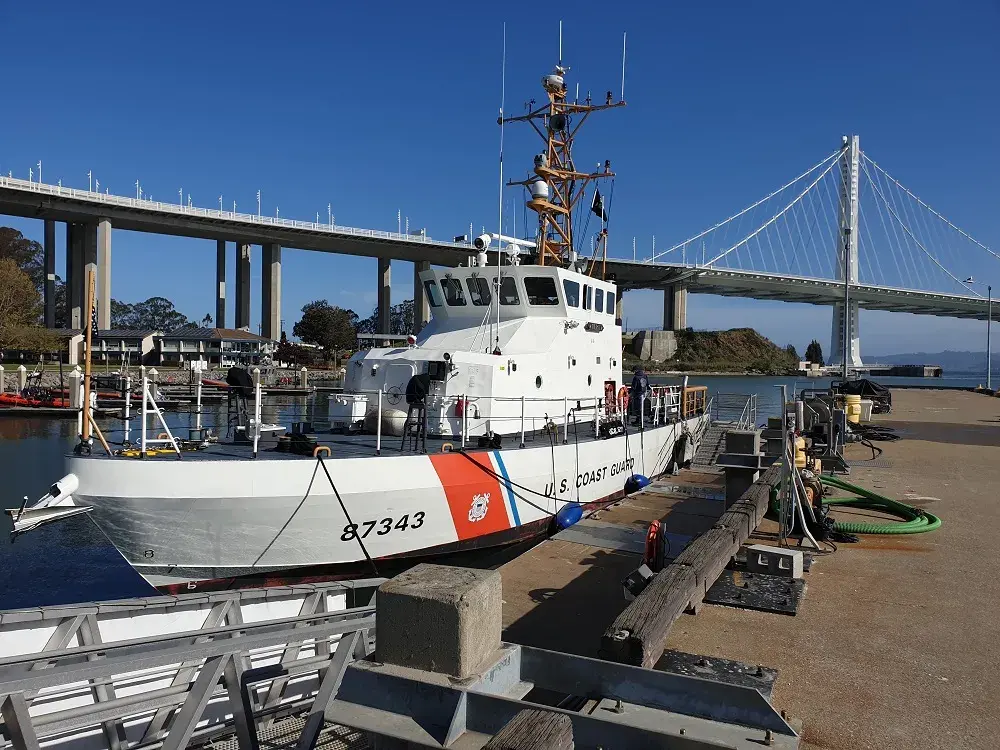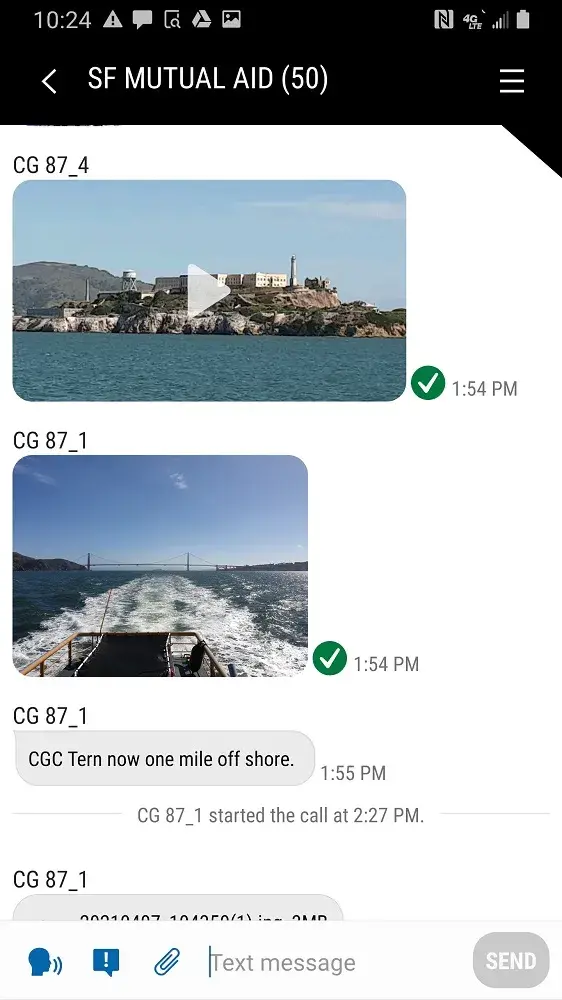The ability for emergency responders to communicate across agencies and jurisdictions is essential for a timely and effective response. Crises can easily involve a broad range of disciplines (law enforcement, fire service, emergency medical service), various sectors (local, state, tribal and federal government), and multiple jurisdictions. The bottom line is that they need to be able to talk to each other—and the Science and Technology Directorate (S&T) works tirelessly to make that happen.
S&T ensures that first responders and the Department of Homeland Security (DHS) can exchange information such as voice, video or data through any medium and that interoperability across agencies is paramount upon transition to broadband communications networks, including FirstNet.
“The significance of interoperability to emergency response operations cannot be overstated,” said Russell Becker, director of S&T’s Office for Interoperability and Compatibility Technology Center. “Standards-based solutions are simply vital to multi-agency response and FirstNet is an important part of that. It’s the first high-speed, nationwide wireless broadband network dedicated to public safety.”
This spring, S&T collaborated with local and federal partners to field test FirstNet’s Push-to-Talk (FNPTT) application, which is a standards-based, mission-critical push-to-talk (MCPTT) app. The app allows voice, video and data communications with high priority and low delays with the press of a button—a necessity in critical events when reliable and quick access to information is vital.
 Over the course of one month, 50 participants from S&T, the U.S. Coast Guard (USCG), Homeland Security Investigations (HSI), U.S. Customs and Border Protection (CBP), and the Oakland (California) Fire Department (FD) tested the app in different scenarios that reflected real-world responses. MCPTT is the public safety mission-critical standard set by the 3rd Generation Partnership Project (3GPP), which is responsible for LTE and 5G global standards. Representatives from the Joint Wireless Program Management Office (JWPMO) and FirstNet AT&T were also involved with the field test.
Over the course of one month, 50 participants from S&T, the U.S. Coast Guard (USCG), Homeland Security Investigations (HSI), U.S. Customs and Border Protection (CBP), and the Oakland (California) Fire Department (FD) tested the app in different scenarios that reflected real-world responses. MCPTT is the public safety mission-critical standard set by the 3rd Generation Partnership Project (3GPP), which is responsible for LTE and 5G global standards. Representatives from the Joint Wireless Program Management Office (JWPMO) and FirstNet AT&T were also involved with the field test.
Many of the available apps in the marketplace are not standards-compliant, which poses a significant challenge for users of current push-to-talk solutions. It presents a barrier for interoperability and sustainability, with different proprietary solutions and associated costs. These stove-piped options can result in increased upkeep expenses and lack of competition. MCPTT includes key characteristics useful for public safety: high availability, reliability and low latency; 1:1 calls and group calls; emergency calling; device-to-device direct communication (unavailable due to lack of a chipset in the handset); and location reporting.
During the field test, two exercise scenarios tested the interoperability of the FNPTT app by demonstrating how different agencies can communicate. AT&T FirstNet provided devices loaded with the app for participants. The field test took place in three locations: with the CBP Office of Field Operations, HSI, USCG, and Oakland FD in San Francisco, California; with CBP in El Paso, Texas; and with HSI, USCG, and S&T in Washington, DC.
 The first scenario simulated CBP agents inspecting cargo at the Port of Oakland and discovering narcotics and suspects, with one person jumping into Oakland Harbor and swimming out to a getaway boat. CBP engaged USCG and HSI to coordinate the response. Meanwhile, a 'fire' broke out at the port, leading to HSI calling 911 and CBP using FNPTT to contact Oakland FD. Throughout the scenario, participants used the FNPTT app to share photos and video for situational awareness, in addition to creating an ad-hoc group to pass along information on the case.
The first scenario simulated CBP agents inspecting cargo at the Port of Oakland and discovering narcotics and suspects, with one person jumping into Oakland Harbor and swimming out to a getaway boat. CBP engaged USCG and HSI to coordinate the response. Meanwhile, a 'fire' broke out at the port, leading to HSI calling 911 and CBP using FNPTT to contact Oakland FD. Throughout the scenario, participants used the FNPTT app to share photos and video for situational awareness, in addition to creating an ad-hoc group to pass along information on the case.
The second scenario involved a USCG Cutter responding to a simulated dive boat fire and medical emergency off the coast of San Francisco. In this scenario, the USCG boat crew engaged CBP and HSI via the FNPTT app, creating an ad-hoc group and making a group call to leadership for incident tracking. The app was also used to share photos when requesting medical support.
The two use-case scenarios took place at the field test kickoff over two days, after which the participants held onto the FNPTT devices to test during their regular duties over the remainder of the month. S&T collected feedback from participants to gauge their experiences with how well the FNPTT app performed. As the app depended on AT&T coverage during the scenarios, some participants noted issues with sending video files due to varying coverage, especially offshore. However, many participants successfully communicated through the app and experienced coverage when they were as far as 25 nautical miles from the shore. Participants expressed interest in having a location tracking feature to prevent blue-on-blue force incidents; location capability is planned for future releases of the app. Other participants provided input on voice quality and ease of use.
As one participant noted, the “application is not perfect, but there’s a lot of potential.” With the feedback received from users on the app’s performance under different conditions, further development can be refined to meet responders’ needs.
Currently, the three participating DHS operational components in the field test—CBP, HSI and USCG—all use different PTT solutions that are proprietary and non-interoperable. Using non-standard implementation, such as these three options, will not provide the interoperability, priority and higher quality of service that standards-compliant solutions offer. Most DHS operational components and public safety agencies use FirstNet AT&T or Verizon. FirstNet AT&T is the congressionally-created and dedicated broadband network for public safety borne out of the 9/11 Commission recommendations.
Pulling off the field test was an overall team effort, from designing the test plans, scenarios and use cases through evaluating FNPTT usability and performance as a standardized approach for all DHS components.
“Our partnerships make these field trials work,” said S&T program manager Sridhar Kowdley. “This allows us to really see how the FNPTT application performs in real-world situations and meets operational needs.”
Moving forward, S&T plans to assess other PTT applications that provide off-network, device-to-device communication, when available, and Land Mobile Radio-to-LTE interworking, as well as assessments with other network providers and operating platforms. With the feedback from this field test and through collaboration with the partners, S&T aims to help DHS operational components, our federal partners (e.g., Department of Justice, Department of Defense) and first responders coalesce towards standard-compliant, mission-critical solutions.
For related media requests, contact STMedia@hq.dhs.gov.
